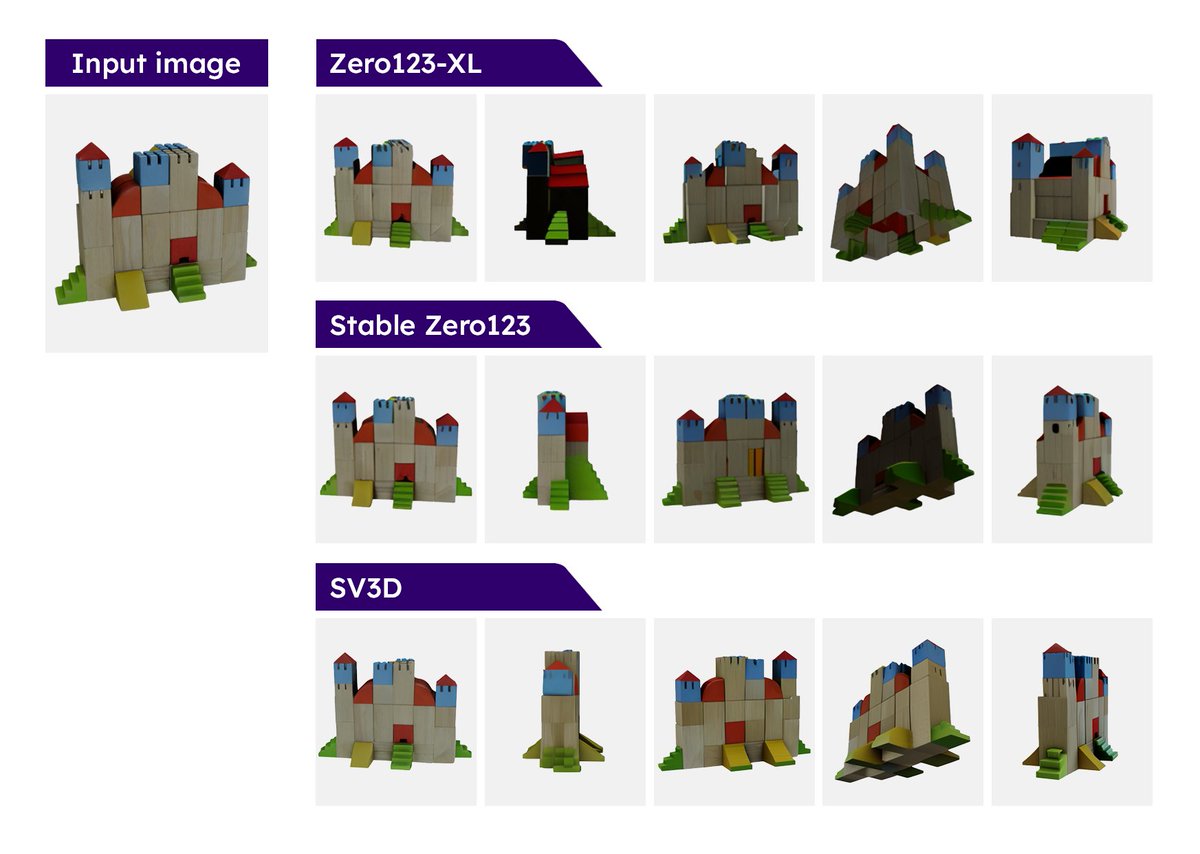

Stable Video 3D (SV3D)
StableVideo3D.com
Input a single image, get multi-angled views, and create detailed 3D meshes with ease.


Input a single image, get multi-angled views, and create detailed 3D meshes with ease.
SV3D takes a single object image as input and output novel multi-views of that object. We can then use those novel-views and SV3D to generate 3D meshes.
Learn MoreMarch 19, 2024
Looking for information on Stable Video 3D? You're in the right place! Explore all about Stable Video 3D (SV3D) right here, where we've gathered everything you need to know.

Stable Video 3D, or SV3D, represents a breakthrough in 3D technology, offering unprecedented quality and view consistency in novel view synthesis and 3D generation from single images. Developed using the advanced Stable Video Diffusion framework, SV3D opens up a new realm of possibilities in 3D visualization.
SV3D operates by taking a single object image as input and generating novel multi-views of that object. These diverse perspectives enable the creation of detailed and accurate 3D meshes, pushing the boundaries of traditional 3D modeling.
SV3D comes in two variants tailored for different needs. SV3D_u focuses on generating orbital videos from single image inputs without camera conditioning, making it ideal for straightforward 3D visualizations. On the other hand, SV3D_p extends this capability to include both single images and orbital views, allowing for more complex 3D video creation along specified camera paths.
SV3D is available for commercial use with a Stability AI Membership, offering a wide range of applications in various industries. For non-commercial purposes, model weights can be downloaded from the Hugging Face platform, accompanied by our comprehensive research paper.
By integrating video diffusion models, SV3D surpasses traditional image diffusion models in generating consistent and generalized views. This approach ensures a more realistic and accurate representation of objects in 3D space, enhancing both visual appeal and practical usability.
SV3D excels in producing detailed, faithful 3D renderings from a single image. Its proficiency in novel view synthesis provides users with a powerful tool to visualize objects from any angle, ensuring both pose-controllability and consistency across multiple views.
To experience SV3D's full potential, explore our GitHub repository for usage instructions and view our technical report for in-depth understanding. Join our growing community on platforms like Twitter, Instagram, LinkedIn, and Discord to stay updated on the latest developments and use cases.
Stable Video 3D, abbreviated as SV3D, is a groundbreaking generative model that creates 3D views and meshes from single images, utilizing the advanced Stable Video Diffusion technology.
SV3D is built on the Stable Video Diffusion framework, enabling it to generate multi-angled views from a single input image, thus revolutionizing the field of 3D model generation.
SV3D excels in synthesizing multiple perspectives of an object from just one image, providing a comprehensive 3D representation.
SV3D offers two variants – SV3D_u for generating orbital videos without camera conditioning, and SV3D_p for more complex 3D video creation along specific camera paths.
With a Stability AI Membership, SV3D can be used for a wide range of commercial applications, offering versatile solutions across different industries.
For educational and non-commercial projects, users can access SV3D's model weights and research papers to explore the technology in-depth.
Compared to traditional image diffusion models, SV3D's video diffusion approach offers enhanced view consistency and realism in 3D object representation.
SV3D ensures high-quality output that remains faithful to the input image, significantly improving the accuracy and realism of the generated 3D models.
SV3D is accessible for different types of users, with detailed instructions and resources available on our GitHub repository and project page.
Join our vibrant community on platforms like Twitter, Instagram, LinkedIn, and Discord to share insights, get support, and stay updated on SV3D's latest developments.
Users are encouraged to use SV3D responsibly, in alignment with Stability AI's Acceptable Use Policy, and avoid applications that generate factual misrepresentations.
It's important to recognize the limitations of SV3D in generating representations of people or events and to use the technology within its intended scope and capabilities.
SV3D is a generative model that creates 3D videos and meshes from a single image, using Stable Video Diffusion technology.
SV3D takes a single image of an object and generates novel multi-view representations of it, which can be used to create detailed 3D meshes.
There are two variants: SV3D_u for generating orbital videos without camera conditioning, and SV3D_p for creating 3D videos along specific camera paths.
Yes, SV3D can be used for commercial purposes with a Stability AI Membership. For non-commercial use, you can download the model weights from Hugging Face.
Basic knowledge of 3D modeling and generative models is helpful, but detailed usage instructions are available in our GitHub repository.
SV3D is optimized for single images of objects, ideally with a clear, unobstructed view for optimal 3D generation.
SV3D automates the generation of 3D models from images, offering faster and more efficient results compared to manual 3D modeling methods.
SV3D is particularly advanced in novel view synthesis and 3D generation from single images, making it a unique offering in the generative model space.
Absolutely. SV3D can be a valuable tool for educational institutions in fields like computer graphics, 3D modeling, and AI.
Using SV3D requires a system with adequate processing power, particularly for graphics processing. Exact specifications can be found in our documentation.
SV3D produces high-quality 3D models, though the accuracy depends on the input image quality and the model's training data.
Yes, users should adhere to ethical guidelines, avoiding the creation of misleading or harmful content, and comply with Stability AI's Acceptable Use Policy.
Additional information, including tutorials, can be found on our GitHub repository, project page, and through our online community on various social platforms.